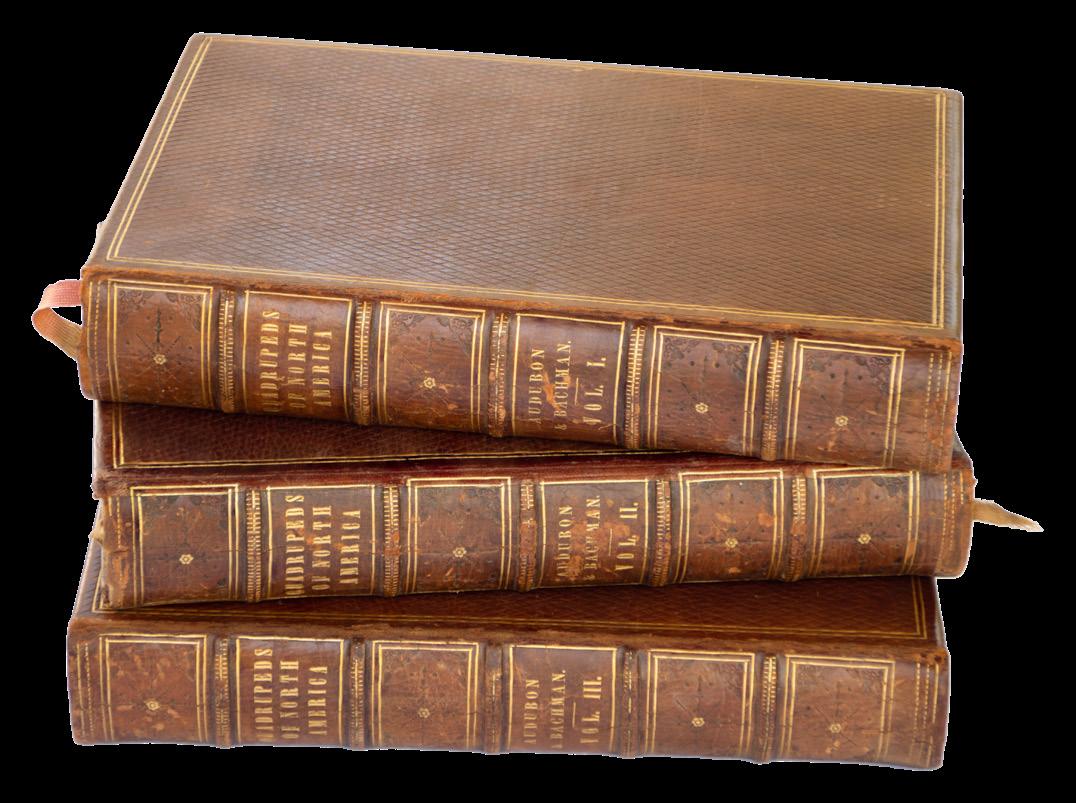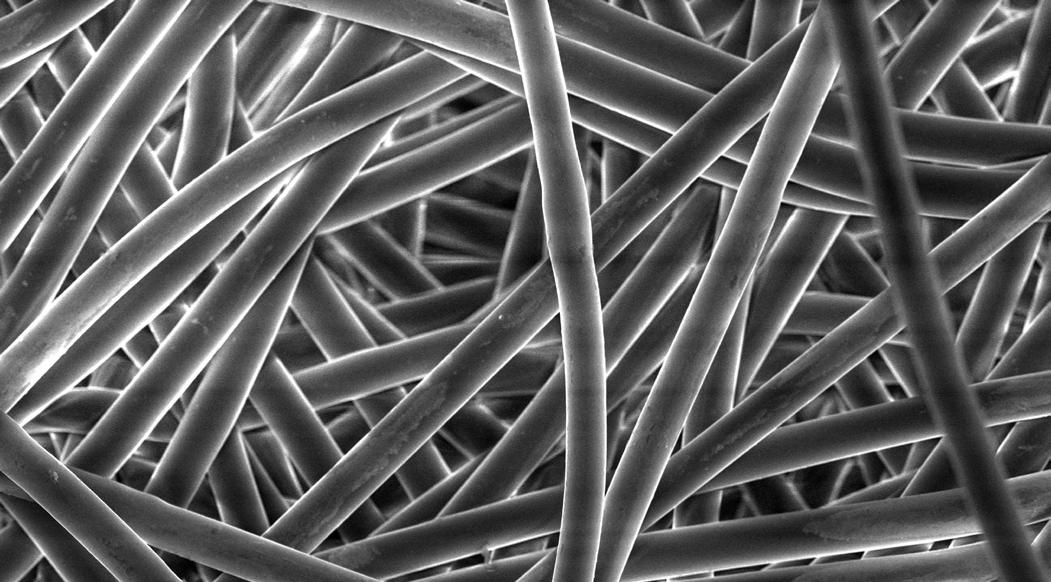
6 minute read
THIS OLD HOUSE
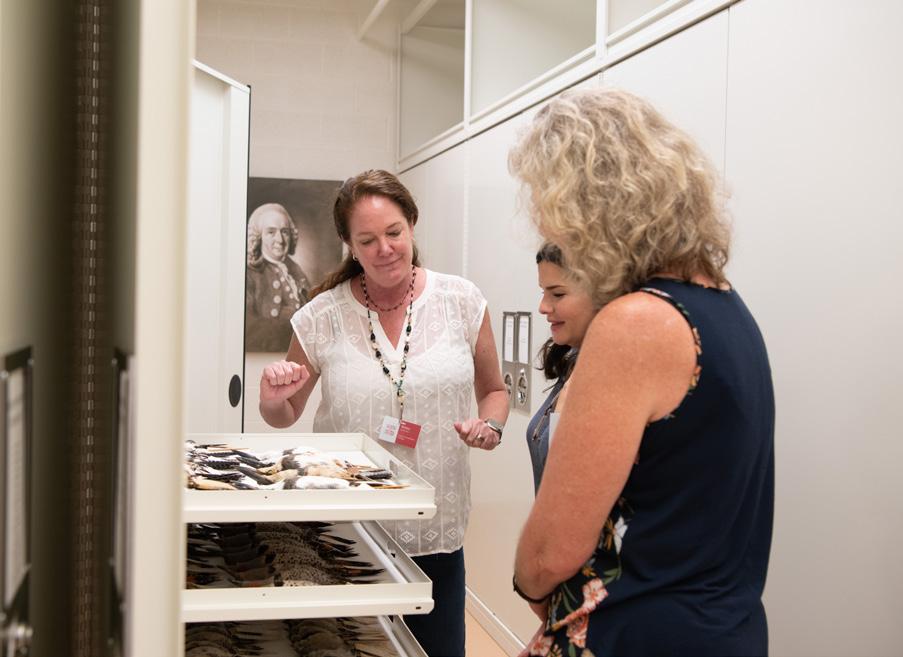
Advertisement
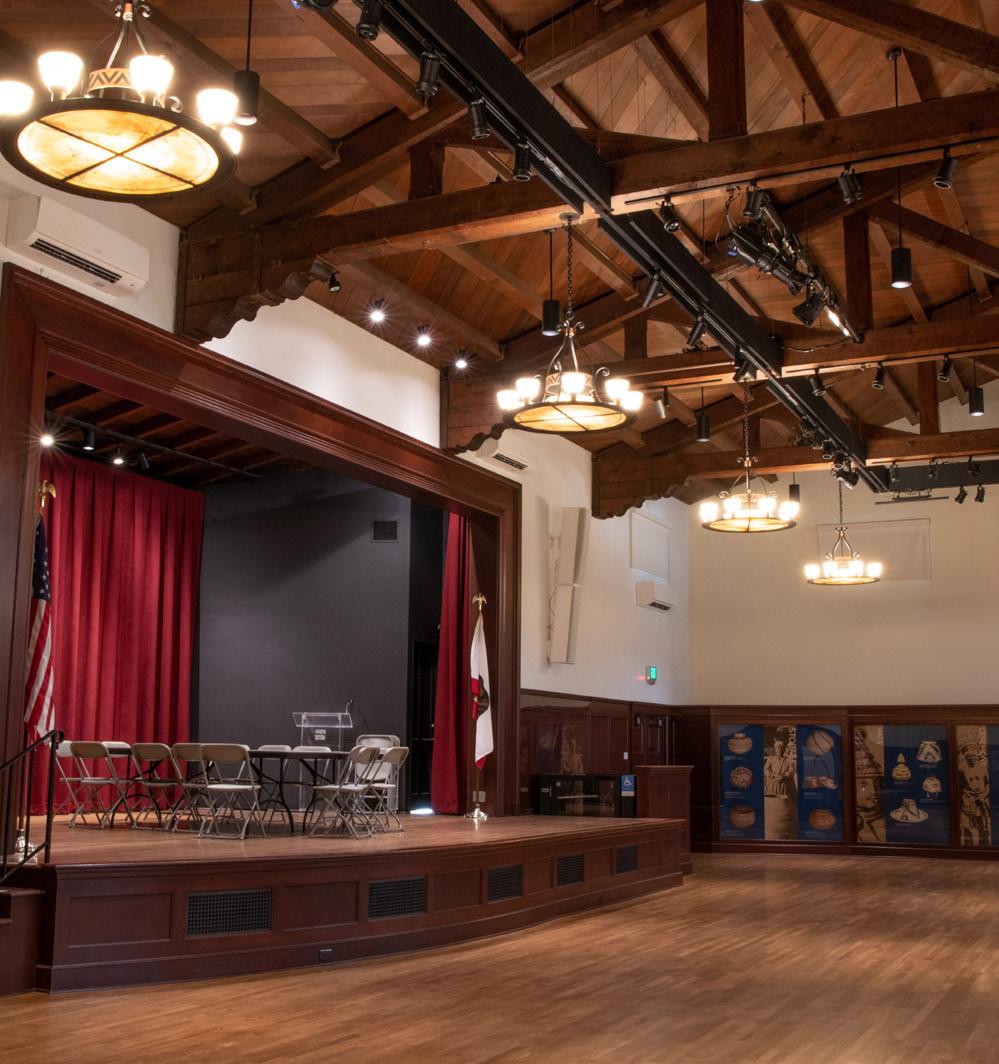
Counter-clockwise from top: The Museum’s front entry was renovated and made ADA accessible as part of the Centennial Project in 2018, Fleischmann Auditorium received extensive updates and restoration in 2019, Curator of Vertebrate Zoology Krista Fahy, Ph.D., shows bird study skins to grants administrators from the California Cultural & Historical Endowment in 2019. CCHE provided critical support for new cabinets in the Department of Vertebrate Zoology. A nyone who has had the good fortune to visit the Museum is immediately struck by the beauty and historic charm of its collection of galleries, auditoriums, and offices — all of which have grown organically alongside Mission Creek since we opened our doors in April 1923. For those of us who have the high privilege to work and volunteer at the Museum, we know intimately the quirks, aches, and creaks of this old house. While the Master Plan we developed will address improvements for several areas of the Museum, it by no means contemplates the needs of the entire fifteen-acre campus. We are proud to have completed Phase One of the Master Plan with our Centennial Project that took three years (2016–2018) of on-the-ground transformative work.
Docent Glenn Grayson leading schoolchildren across the Towbes Family Bridge in 2019
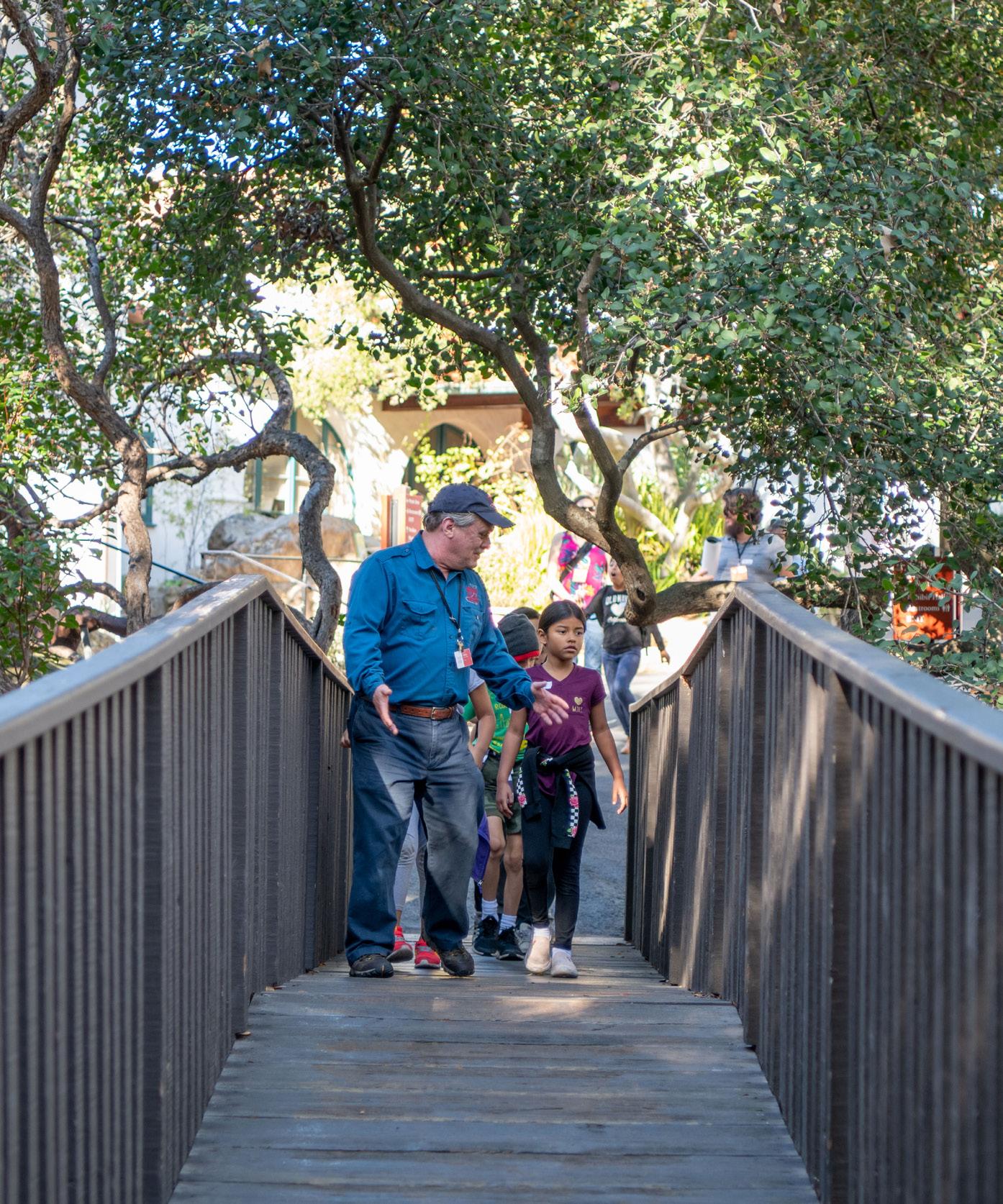
When the heating system in Fleischmann Auditorium failed entirely, we executed a top-tobottom renovation, completed in 2019. We look forward to Phase Two of the Master Plan which will address both the exhibits and the building structures in the middle of our campus (the Chumash Life gallery, the Earth & Marine Sciences gallery, public restrooms, and accessibility challenges that restrict movement through the center of the campus). But first, we have two other significant repair projects that must be completed to ensure the safety of our collections, and to meet the ongoing operational and programmatic needs of the Museum. In past communications, we have described the significant scope of our Collections Care Project in our Collections and Research Center; this project will dramatically enhance our ability to provide stable environmental controls to meet the unique needs of our various collections. That project is scheduled to begin next spring. A more recent discovery, however, was that our pedestrian bridge over Mission Creek, the Towbes Family Bridge, needed structural repair. The Towbes bridge provides critical visitor circulation for daily guests, for school group visits, and for the many families who host weddings, birthday parties, and memorial services under the lovely oaks on the south side of the creek. Just imagine trying to navigate the Santa Barbara Wine + Food Festival®
with only our vehicle bridge in play – yikes! Happily, the design and permitting process for repairs to the pedestrian bridge are well underway and that work will likewise be underway next spring. Finally, we used the closure caused by the state’s stay at home order to develop a systematic and comprehensive plan for repairs to every aspect of the infrastructure at both the Museum and the Sea Center, both above and below ground. Staff and the Board of Trustees now have a complete view of what needs to be addressed for this old house in the years ahead. It will take significant financial support from the community, and the goodwill of staff and visitors who will have to contend with repair work now and then, and here and there, but together we will meet the challenge. Those that come after us will have a Museum that continues to be safe, sound, and well cared for. We accept the responsibility to make that happen and we will do it together. For more information or to support these projects contact Director of Development Caroline Grange at cgrange@sbnature2.org or 805-682-4711 ext. 109.
RARE GIFT FROM A RARE COUPLE
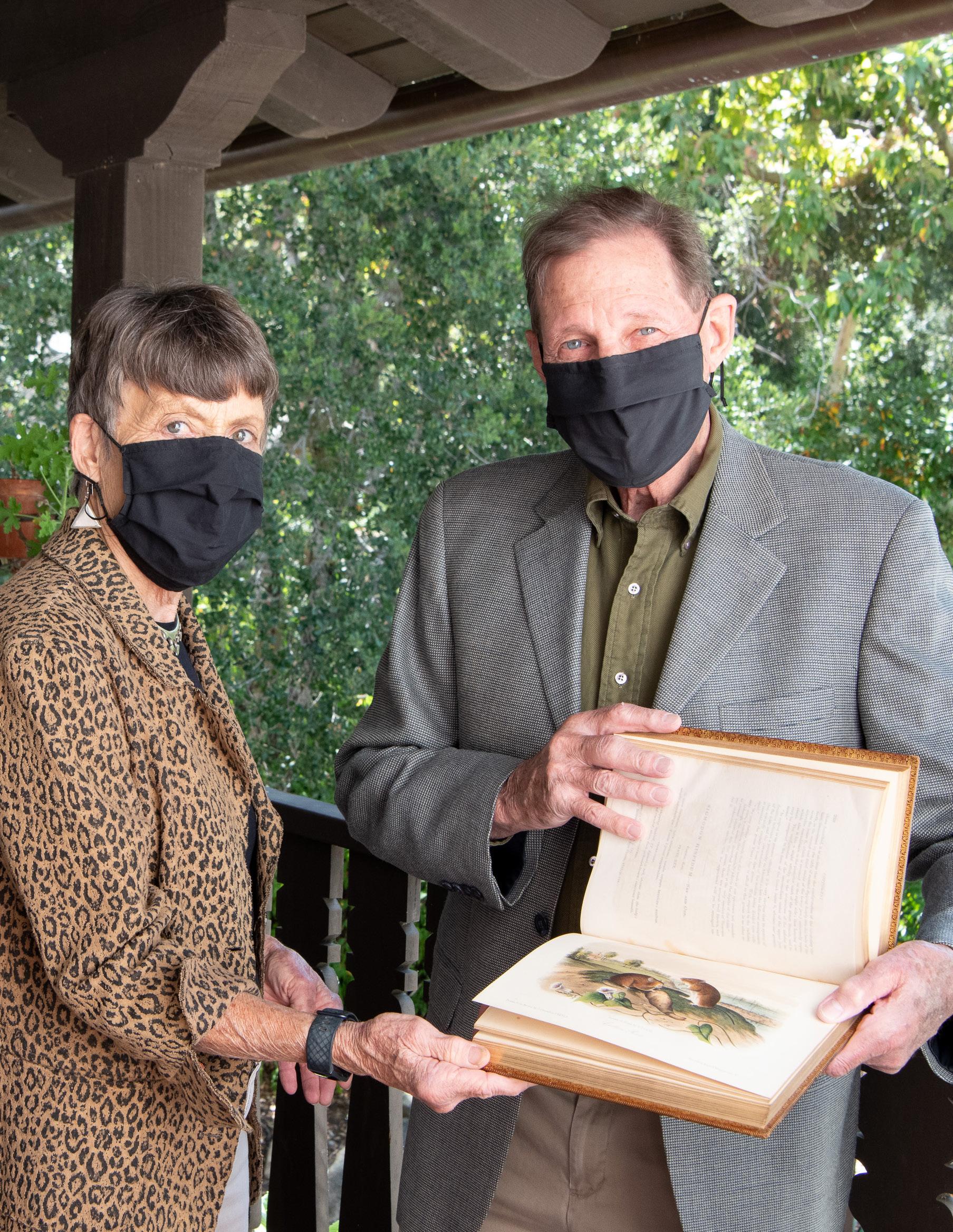
This summer, masked superheroes visited the Museum to make an extraordinary gift of rare books: a complete set of three octavo volumes of John James Audubon’s 1849 Quadrupeds of North America. Maximus Gallery Curator Linda Miller and Librarian Terri Sheridan were overjoyed. “This set is the perfect complement to the Museum Library’s royal octavo edition of The Birds of America,” explains Sheridan. “It adds text and context to the larger mammal prints in the Maximus Collection.” It will be preserved in our climate-controlled rare book room for access by scholars and appearances in exhibits. The gift came from a couple with a long, fulfilling history with us: Penny (Elizabeth) and Joe Knowles. The Knowleses live in Santa Ynez and are Members of the Mission Creek Legacy Society, which recognizes donors who have included the Museum in their estate plans. “We cannot overestimate the gift to our family that the presence of the Museum has been in our lives,” the Knowleses reflected. “We think it makes sense that an inheritance from Penny’s family might enhance the experience of future members of the Museum family, and inspire other donations.”
The couple shares a lifelong history with art and museums which makes them highly qualified to know the artistic value of their gift. Joe Knowles, Jr., the son of artists, has had his own artwork represented in shows on both coasts. His passion for natural history was nurtured by friendships with SBMNH curators and directors. Penny is an art historian who began her museum career as curator of education at the Santa Barbara Museum of Art. After a decade leading East Coast museums, she returned to California to become the first executive director of the Wildling Museum, whose work and mission is close to our hearts.
The Knowleses learned about the gap in our Audubon collections at a Leadership Circles behindthe-scenes Science Salon last year. Although in-person Science Salons are now on hold, Leadership Circles Development Officer Diane Devine organized the Legends of the Halls Zoom series to entertain and inform a wider audience. “Development is all about connections,” says Devine. “Those personal faceto-face interactions are greatly missed. Yet the ‘why’ of what we do—and the importance of developing advocates for nature—remains more important than ever.”
A survey conducted by the American Alliance of Museums reported in July 2020 that a third of museums in the United
Penny and Joe Knowles present a volume of their generous gift outside the Museum’s Maximus Wing.
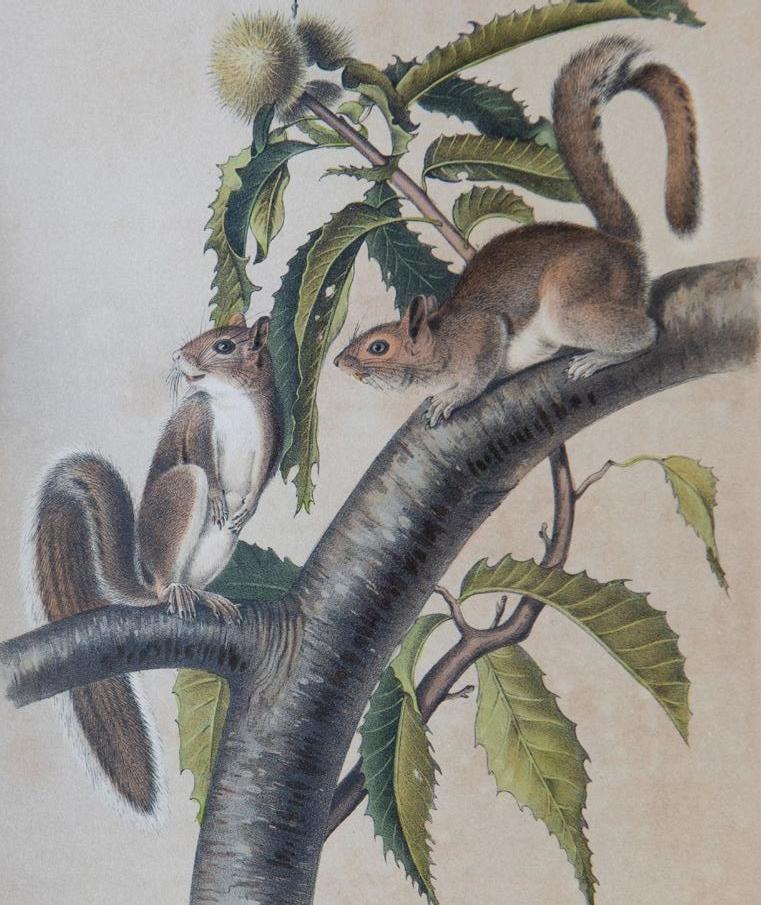
States may never reopen after the pandemic. Thanks to the gifts of our supporters, we can be confident that our Museum has a future and will continue to serve the community through the lifetimes of coming generations. “Estate gifts to the Museum have given us a financial cushion during these challenging times,” reports Legacy Giving Development Officer Rochelle Rose, CFRE. Rose is organizing a series of virtual educational events for Mission Creek Legacy Society Members and those considering joining their growing ranks. If you’re thinking about making a gift to the Museum family as part of your legacy, or joining the Leadership Circles, learn more at sbnature.org/legacygiving or sbnature.org/support.
